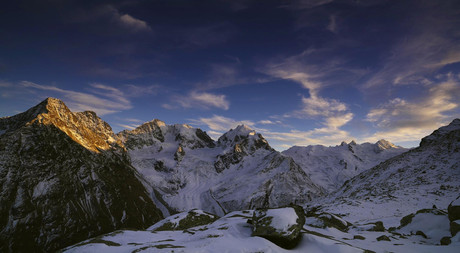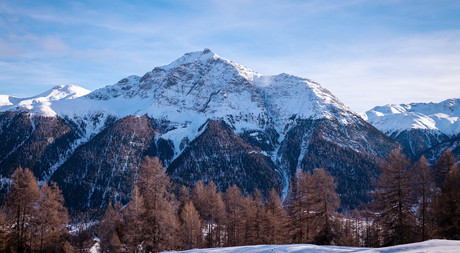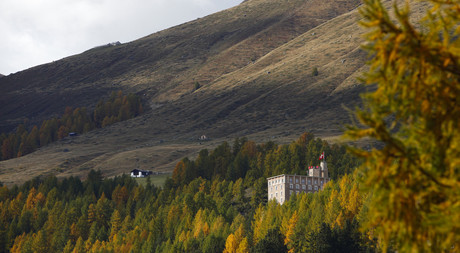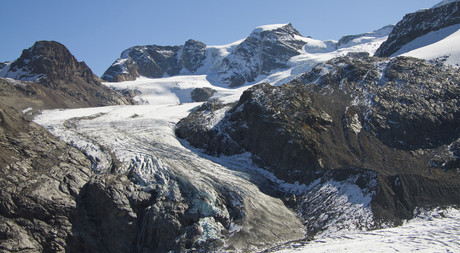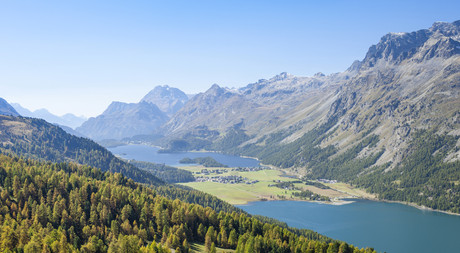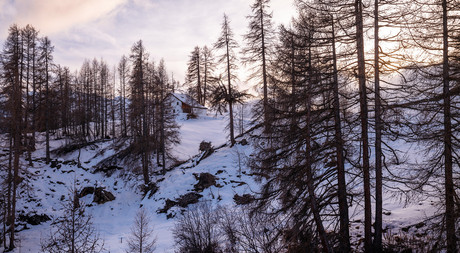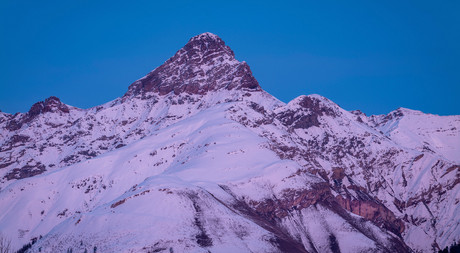MOUNTAINS, VASTNESS, LIGHT
In the local language, Romansch, the original meaning of the word Engadine (Engiadina) is "garden of the Inn". A garden nestled at the foot of the Bernina Range with its countless three 3,000-plus-metre mountains and close to the Swiss National Park, which is considered a botanical treasure trove with its pristine larch and stone pine forests, it enjoys an average of more than 300 sunny days a year. The fascinating play of light inspired Nietzsche to think that he had found the “cradle of all silver tones”.
WIND AND WEATHER
It is thanks to its location as a high-alpine mountain valley that the Engadine has a “champagne climate” – the air tickles! Experts prosaically describe it as a dry continental climate, meaning that there is little rainfall here, but what is really impressive are the temperature fluctuations between summer and winter, and between day and night.
The Engadine winter is of course fantastically white – however, this is not necessarily due to frequent snowfall, but to the fact that the snow lasts when it does fall; the dry cold prevents the sun from turning the slopes into green spring pastures in the middle of winter. And it brings perfect powder-snow conditions to the Engadine – rivalling those found in the Rocky Mountains.
Another climate speciality is also a result of the dry air: on a winter morning, the valley around Samedan can be up to 10° C colder than the Piz Corvatsch, 1600 metres above. This pool of cold air occurs because dry air cannot retain as much heat.
Another weather phenomenon is the Maloja Snake that meanders down the mountain slopes from the Maloja Pass into the valley as a narrow band of clouds –for the locals a sign that bad weather is brewing. Meteorologists explain that this phenomenon occurs because warm, humid air from Lake Como flows through the Bergell into the Engadine.
GLACIERS IN THE ENGADINE
A total of 173 glaciers cover an area of 40 square kilometres in the Engadine (around 6% percent of the Upper Engadin) and meander around the highest peaks of the Eastern Alps. The undisputed number one is the Morteratsch Glacier. Stretching an impressive seven kilometres in length, it is the longest glacier in the Engadine. Equally impressive natural phenomena are the other glaciers in the region, which sport resounding names such as Roseg, Tschierva, Sella and Pers Glacier.
The growth or shrinkage of a glacier depends on how much glacial ice is growing in the so-called accumulation zone above the snowline. This ice does not form from frozen water, but from snow that does not melt away in the summer. In order for a glacier to be in balance, the accumulation area must be twice as large as the "ablation zone" below the snowline where the ice melts.
Anyone who walks through the archaic mountain landscape of the Engadine as a hobby glaciologist in the late summer will quickly become aware of this phenomenon; the spot on the glacier that is still covered in snow is the accumulation area.
THE WATERSHED AT PIZ LUNGHIN
On the Lunghin Pass (2780 m above sea level) in Maloja is the only triple watershed. From here, a drop of water can make its way to three different oceans: if it flows north, it flows into the North Sea through the rivers Julia and Rhine. To the east it flows into the Black Sea through the Inn and the Danube. And when it takes the journey to the south, it ends up in the Adriatic. The Lunghin watershed is also famous because the Inn has its source here, the river that gave the Engadine its name.
Not far from there, you will come across the glacier mills Reserve Maloja, the largest cluster of moulins (glacier mills) in Europe. The 30 pot-like moulins feature diameters of up to 7 metres and are up to 11 metres deep.
Even at higher altitudes, the water determines the character of the landscape – but at this level it is in frozen form. With the Morteratsch Glacier, the Engadine has the mightiest glacier in the Eastern Alps. Acting as a huge freshwater reservoir, it is of significant importance for Eastern Central Europe.




